• The Functions of Syllables in English.

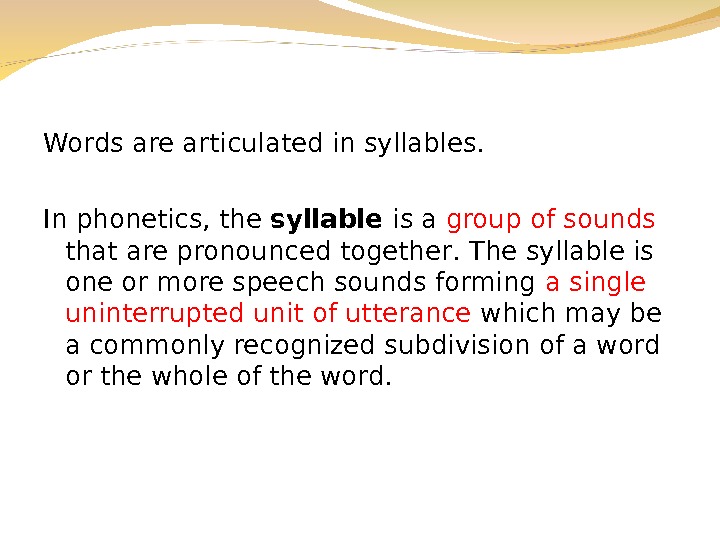
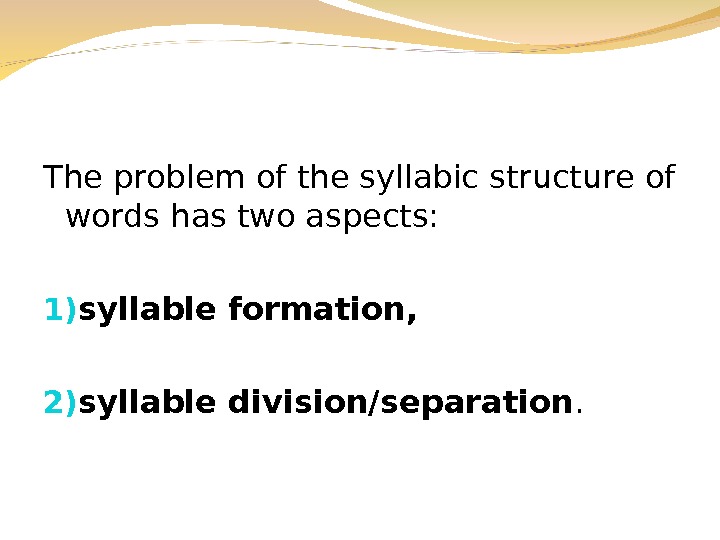
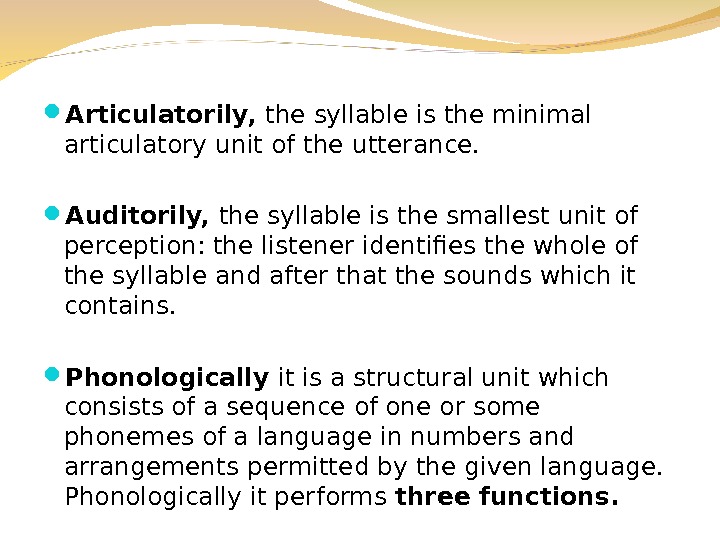
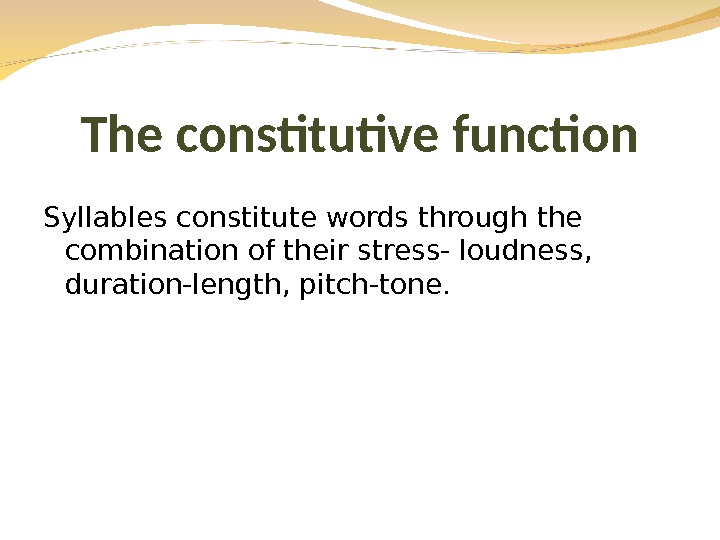
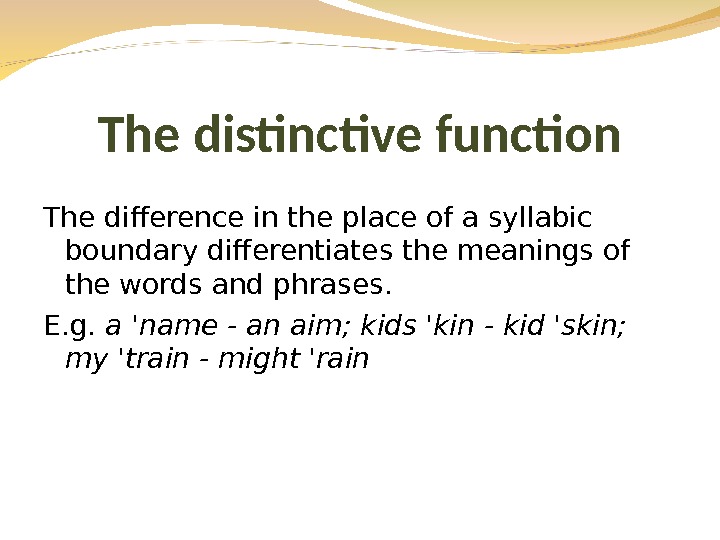
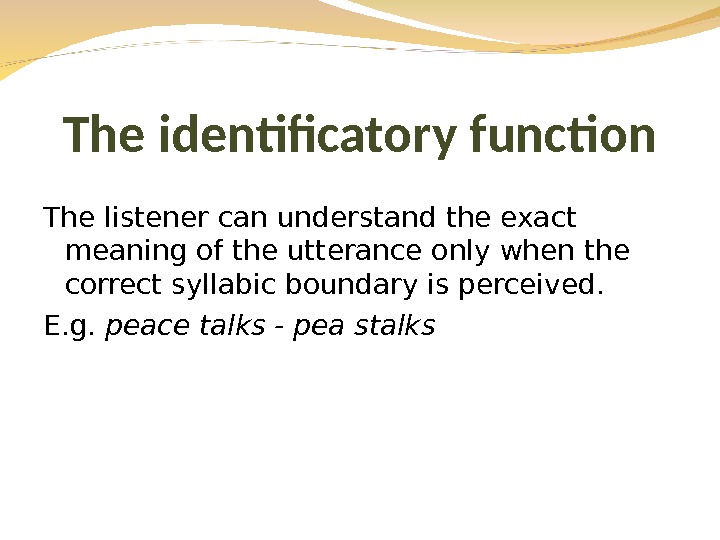
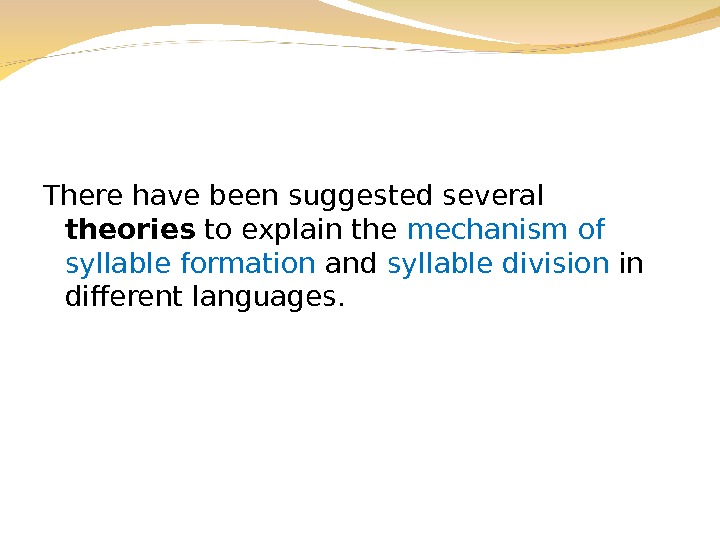
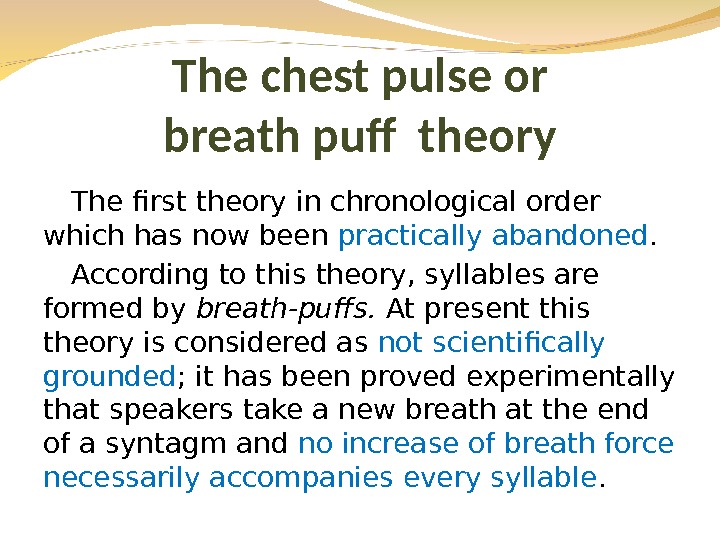
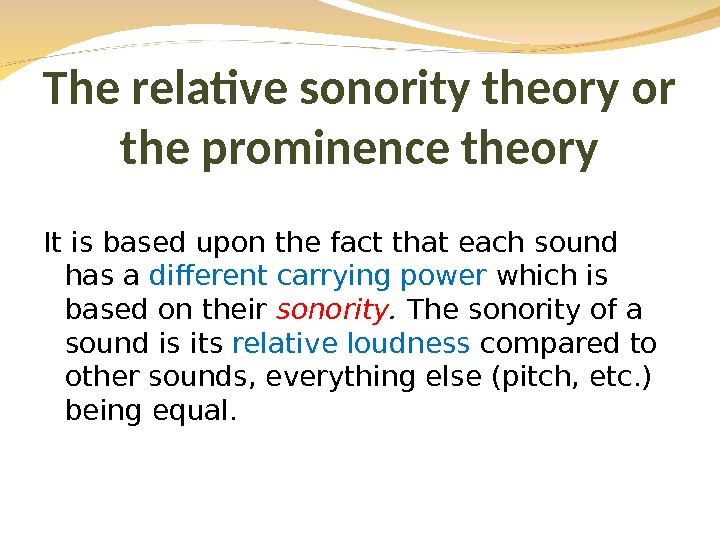
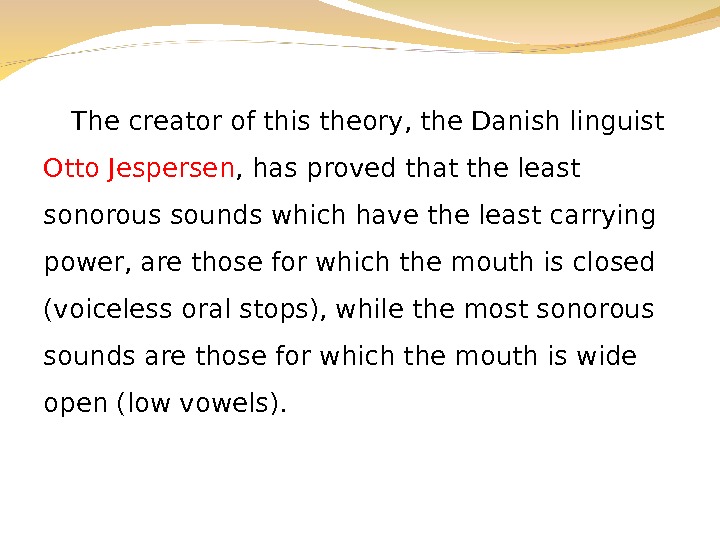
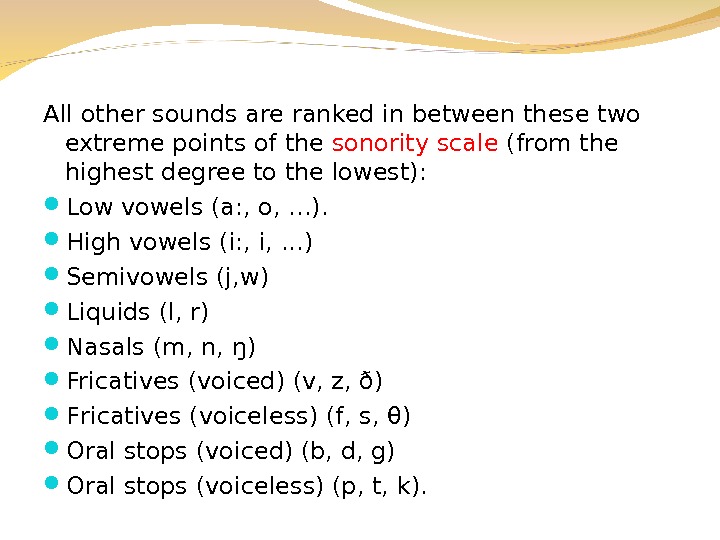


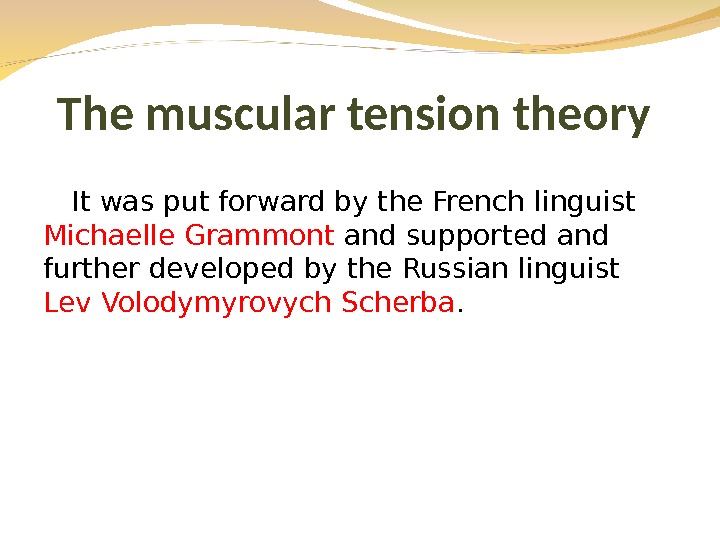
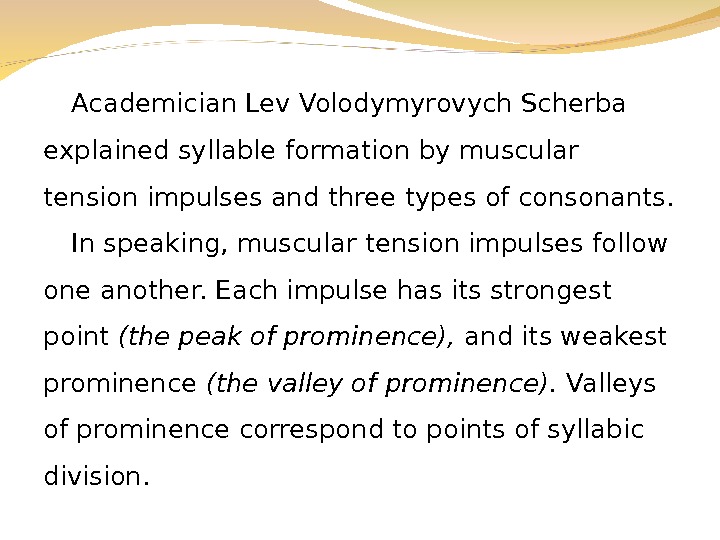
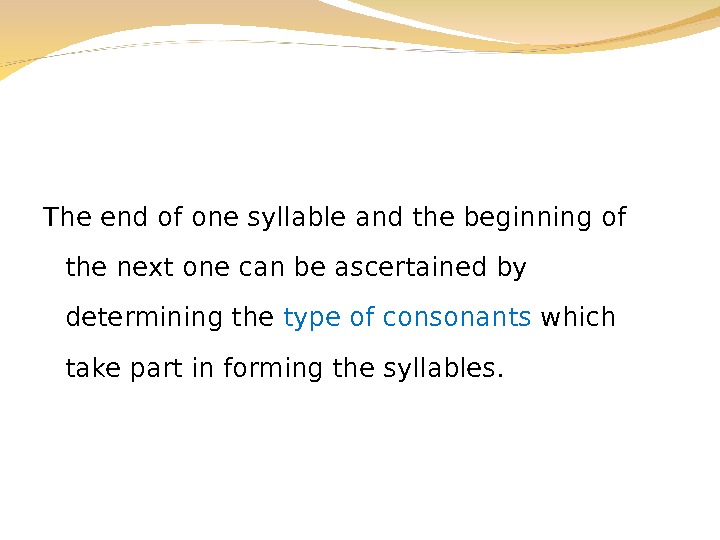
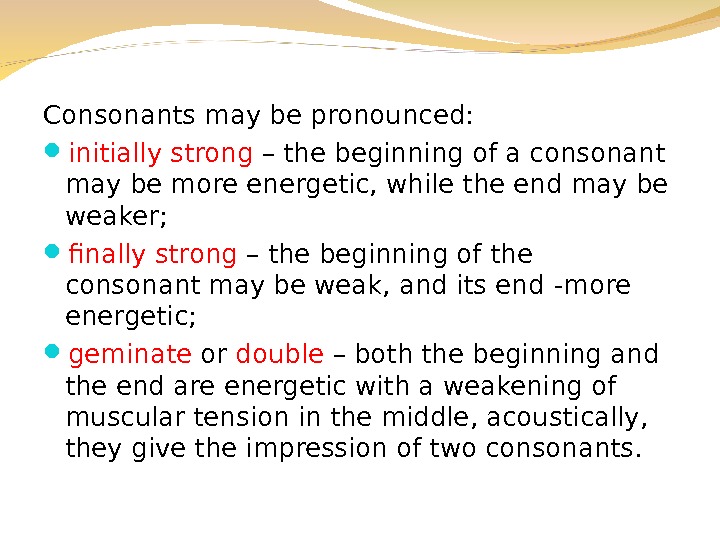
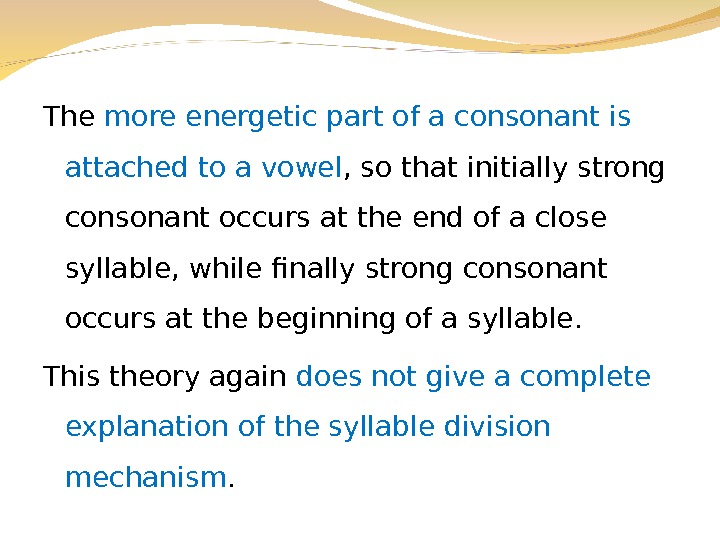



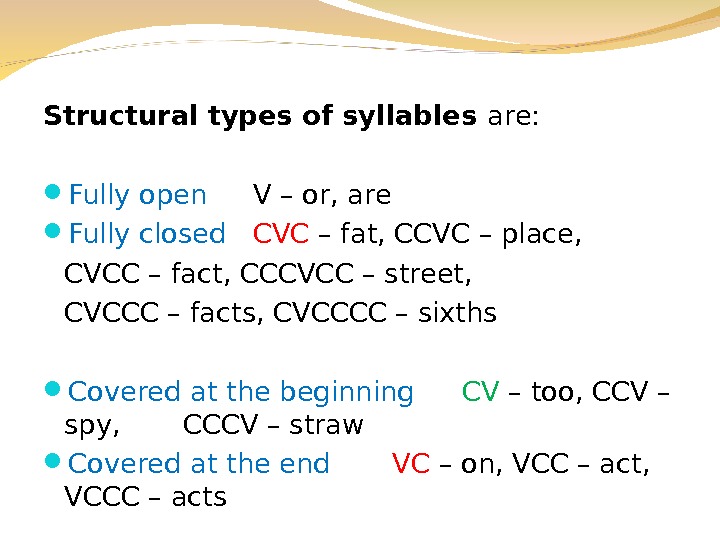
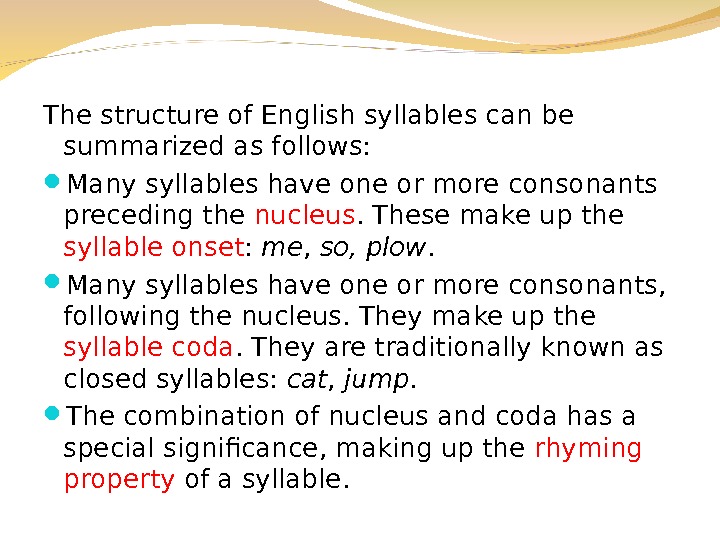
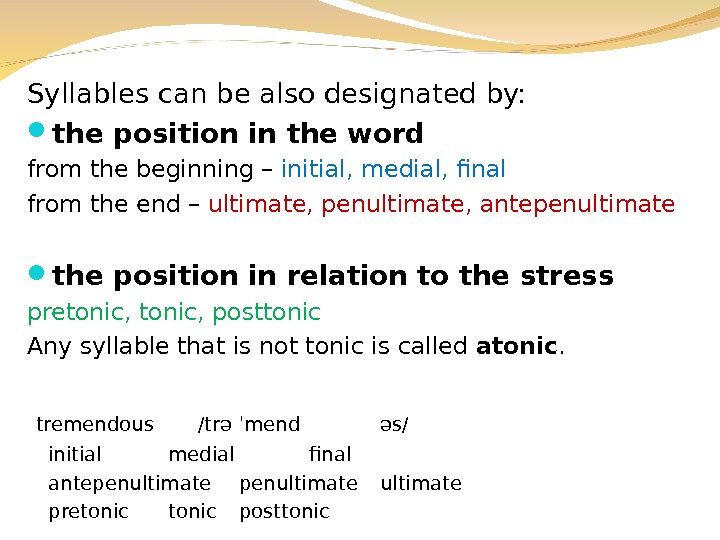
- Размер: 294 Кб
- Количество слайдов: 25
Описание презентации • The Functions of Syllables in English. по слайдам
 • The Functions of Syllables in English. • Theories on Syllable Formation and Division. • The Structure of Syllables in English.
• The Functions of Syllables in English. • Theories on Syllable Formation and Division. • The Structure of Syllables in English.
 Words are articulated in syllables. In phonetics, the syllable is a group of sounds that are pronounced together. The syllable is one or more speech sounds forming a single uninterrupted unit of utterance which may be a commonly recognized subdivision of a word or the whole of the word.
Words are articulated in syllables. In phonetics, the syllable is a group of sounds that are pronounced together. The syllable is one or more speech sounds forming a single uninterrupted unit of utterance which may be a commonly recognized subdivision of a word or the whole of the word.
 The problem of the syllabic structure of words has two aspects: 1) syllable formation, 2) syllable division/separation.
The problem of the syllabic structure of words has two aspects: 1) syllable formation, 2) syllable division/separation.
 Articulatorily, the syllable is the minimal articulatory unit of the utterance. Auditorily, the syllable is the smallest unit of perception: the listener identifies the whole of the syllable and after that the sounds which it contains. Phonologically it is a structural unit which consists of a sequence of one or some phonemes of a language in numbers and arrangements permitted by the given language. Phonologically it performs three functions.
Articulatorily, the syllable is the minimal articulatory unit of the utterance. Auditorily, the syllable is the smallest unit of perception: the listener identifies the whole of the syllable and after that the sounds which it contains. Phonologically it is a structural unit which consists of a sequence of one or some phonemes of a language in numbers and arrangements permitted by the given language. Phonologically it performs three functions.
 Syllables constitute words through the combination of their stress- loudness, duration-length, pitch-tone. The constitutive function
Syllables constitute words through the combination of their stress- loudness, duration-length, pitch-tone. The constitutive function
 The difference in the place of a syllabic boundary differentiates the meanings of the words and phrases. E. g. a ‘name — an aim; kids ‘kin — kid ‘skin; my ‘train — might ‘rain. The distinctive function
The difference in the place of a syllabic boundary differentiates the meanings of the words and phrases. E. g. a ‘name — an aim; kids ‘kin — kid ‘skin; my ‘train — might ‘rain. The distinctive function
 The listener can understand the exact meaning of the utterance only when the correct syllabic boundary is perceived. E. g. peace talks — pea stalks. The identificatory function
The listener can understand the exact meaning of the utterance only when the correct syllabic boundary is perceived. E. g. peace talks — pea stalks. The identificatory function
 There have been suggested several theories to explain the mechanism of syllable formation and syllable division in different languages.
There have been suggested several theories to explain the mechanism of syllable formation and syllable division in different languages.
 The first theory in chronological order which has now been practically abandoned. According to this theory, syllables are formed by breath-puffs. At present this theory is considered as not scientifically grounded ; it has been proved experimentally that speakers take a new breath at the end of a syntagm and no increase of breath force necessarily accompanies every syllable. The chest pulse or breath puff theory
The first theory in chronological order which has now been practically abandoned. According to this theory, syllables are formed by breath-puffs. At present this theory is considered as not scientifically grounded ; it has been proved experimentally that speakers take a new breath at the end of a syntagm and no increase of breath force necessarily accompanies every syllable. The chest pulse or breath puff theory
 It is based upon the fact that each sound has a different carrying power which is based on their sonority. The sonority of a sound is its relative loudness compared to other sounds, everything else (pitch, etc. ) being equal. The relative sonority theory or the prominence theory
It is based upon the fact that each sound has a different carrying power which is based on their sonority. The sonority of a sound is its relative loudness compared to other sounds, everything else (pitch, etc. ) being equal. The relative sonority theory or the prominence theory
 The creator of this theory, the Danish linguist Otto Jespersen , has proved that the least sonorous sounds which have the least carrying power, are those for which the mouth is closed (voiceless oral stops), while the most sonorous sounds are those for which the mouth is wide open (low vowels).
The creator of this theory, the Danish linguist Otto Jespersen , has proved that the least sonorous sounds which have the least carrying power, are those for which the mouth is closed (voiceless oral stops), while the most sonorous sounds are those for which the mouth is wide open (low vowels).
 All other sounds are ranked in between these two extreme points of the sonority scale (from the highest degree to the lowest): Low vowels (a: , o, . . . ). High vowels (і: , і , . . . ) Semivowels (j , w) Liquids ( l , r) Nasals ( m, n, ŋ) Fricatives (voiced) (v, z, ð) Fricatives (voiceless) (f, s, θ) Oral stops (voiced) (b, d, g) Oral stops (voiceless) (p, t, k).
All other sounds are ranked in between these two extreme points of the sonority scale (from the highest degree to the lowest): Low vowels (a: , o, . . . ). High vowels (і: , і , . . . ) Semivowels (j , w) Liquids ( l , r) Nasals ( m, n, ŋ) Fricatives (voiced) (v, z, ð) Fricatives (voiceless) (f, s, θ) Oral stops (voiced) (b, d, g) Oral stops (voiceless) (p, t, k).
 By this theory the syllable is treated as the combination of a more sonorous sound with a less sonorous one. All the sounds with the greatest degree of sonority (vowels and sonorants) are at the peak of the syllable , by which the syllable may be marked as a unit, because the rest of the sounds surrounding the peak cling to it.
By this theory the syllable is treated as the combination of a more sonorous sound with a less sonorous one. All the sounds with the greatest degree of sonority (vowels and sonorants) are at the peak of the syllable , by which the syllable may be marked as a unit, because the rest of the sounds surrounding the peak cling to it.
 The sonority theory helps establish the number of syllables in a word , but it’s difficult to find the syllable boundary using this syllable as it doesn’t explain the mechanism of syllable division.
The sonority theory helps establish the number of syllables in a word , but it’s difficult to find the syllable boundary using this syllable as it doesn’t explain the mechanism of syllable division.
 It was put forward by the French linguist Michaelle Grammont and supported and further developed by the Russian linguist Lev Volodymyrovych Scherba. The muscular tension theory
It was put forward by the French linguist Michaelle Grammont and supported and further developed by the Russian linguist Lev Volodymyrovych Scherba. The muscular tension theory
 Academician Lev Volodymyrovych Scherba explained syllable formation by muscular tension impulses and three types of consonants. In speaking, muscular tension impulses follow one another. Each impulse has its strongest point (the peak of prominence), and its weakest prominence (the valley of prominence). Valleys of prominence correspond to points of syllabic division.
Academician Lev Volodymyrovych Scherba explained syllable formation by muscular tension impulses and three types of consonants. In speaking, muscular tension impulses follow one another. Each impulse has its strongest point (the peak of prominence), and its weakest prominence (the valley of prominence). Valleys of prominence correspond to points of syllabic division.
 The end of one syllable and the beginning of the next one can be ascertained by determining the type of consonants which take part in forming the syllables.
The end of one syllable and the beginning of the next one can be ascertained by determining the type of consonants which take part in forming the syllables.
 Consonants may be pronounced: initially strong – the beginning of a consonant may be more energetic, while the end may be weaker; finally strong – the beginning of the consonant may be weak, and its end — more energetic; geminate or double – both the beginning and the end are energetic with a weakening of muscular tension in the middle, acoustically, they give the impression of two consonants.
Consonants may be pronounced: initially strong – the beginning of a consonant may be more energetic, while the end may be weaker; finally strong – the beginning of the consonant may be weak, and its end — more energetic; geminate or double – both the beginning and the end are energetic with a weakening of muscular tension in the middle, acoustically, they give the impression of two consonants.
 The more energetic part of a consonant is attached to a vowel , so that initially strong consonant occurs at the end of a close syllable, while finally strong consonant occurs at the beginning of a syllable. This theory again does not give a complete explanation of the syllable division mechanism.
The more energetic part of a consonant is attached to a vowel , so that initially strong consonant occurs at the end of a close syllable, while finally strong consonant occurs at the beginning of a syllable. This theory again does not give a complete explanation of the syllable division mechanism.
 Different languages have different kinds of syllable structure. In English the syllable is formed: By any vowel alone or in combination with one or more consonants – not more than three preceding and not more than four following it, e. g. are /ɑː/, street /striːt/, sixths /sıks Ө s/. By word final sonorants immediately preceded by a consonant, e. g. rhythm /ˈrıð ə m/, garden /ˈgɑːd ǝ n/. The English sonorants /j/ and /w/ are never syllabic since they are always syllable-initial.
Different languages have different kinds of syllable structure. In English the syllable is formed: By any vowel alone or in combination with one or more consonants – not more than three preceding and not more than four following it, e. g. are /ɑː/, street /striːt/, sixths /sıks Ө s/. By word final sonorants immediately preceded by a consonant, e. g. rhythm /ˈrıð ə m/, garden /ˈgɑːd ǝ n/. The English sonorants /j/ and /w/ are never syllabic since they are always syllable-initial.
 Syllable Rhyme Onset Nucleus/Peak/Center Coda /pl ɑː nt/
Syllable Rhyme Onset Nucleus/Peak/Center Coda /pl ɑː nt/
 The structure of English syllables can be summarized as follows: Many syllables have one or more consonants preceding the nucleus. These make up the syllable onset : me , so, plow. Many syllables have one or more consonants, following the nucleus. They make up the syllable coda. They are traditionally known as closed syllables: cat , jump. The combination of nucleus and coda has a special significance, making up the rhyming property of a syllable.
The structure of English syllables can be summarized as follows: Many syllables have one or more consonants preceding the nucleus. These make up the syllable onset : me , so, plow. Many syllables have one or more consonants, following the nucleus. They make up the syllable coda. They are traditionally known as closed syllables: cat , jump. The combination of nucleus and coda has a special significance, making up the rhyming property of a syllable.
 Structural types of syllables are: Fully open V – or, are Fully closed CVC – fat, CCVC – place, CVCC – fact, CCCVCC – street, CVCCC – facts, CVCCCC – sixths Covered at the beginning CV – too, CCV – spy, CCCV – straw Covered at the end VC – on, VCC – act, VCCC – acts
Structural types of syllables are: Fully open V – or, are Fully closed CVC – fat, CCVC – place, CVCC – fact, CCCVCC – street, CVCCC – facts, CVCCCC – sixths Covered at the beginning CV – too, CCV – spy, CCCV – straw Covered at the end VC – on, VCC – act, VCCC – acts
 The structure of English syllables can be summarized as follows: Many syllables have one or more consonants preceding the nucleus. These make up the syllable onset : me , so, plow. Many syllables have one or more consonants, following the nucleus. They make up the syllable coda. They are traditionally known as closed syllables: cat , jump. The combination of nucleus and coda has a special significance, making up the rhyming property of a syllable.
The structure of English syllables can be summarized as follows: Many syllables have one or more consonants preceding the nucleus. These make up the syllable onset : me , so, plow. Many syllables have one or more consonants, following the nucleus. They make up the syllable coda. They are traditionally known as closed syllables: cat , jump. The combination of nucleus and coda has a special significance, making up the rhyming property of a syllable.
 Syllables can be also designated by: the position in the word from the beginning – initial, medial, final from the end – ultimate, penultimate, antepenultimate the position in relation to the stress pretonic, posttonic Any syllable that is not tonic is called atonic. tremendous /trə ˈmend əs/ initial medial final antepenultimate pretonic posttonic
Syllables can be also designated by: the position in the word from the beginning – initial, medial, final from the end – ultimate, penultimate, antepenultimate the position in relation to the stress pretonic, posttonic Any syllable that is not tonic is called atonic. tremendous /trə ˈmend əs/ initial medial final antepenultimate pretonic posttonic
